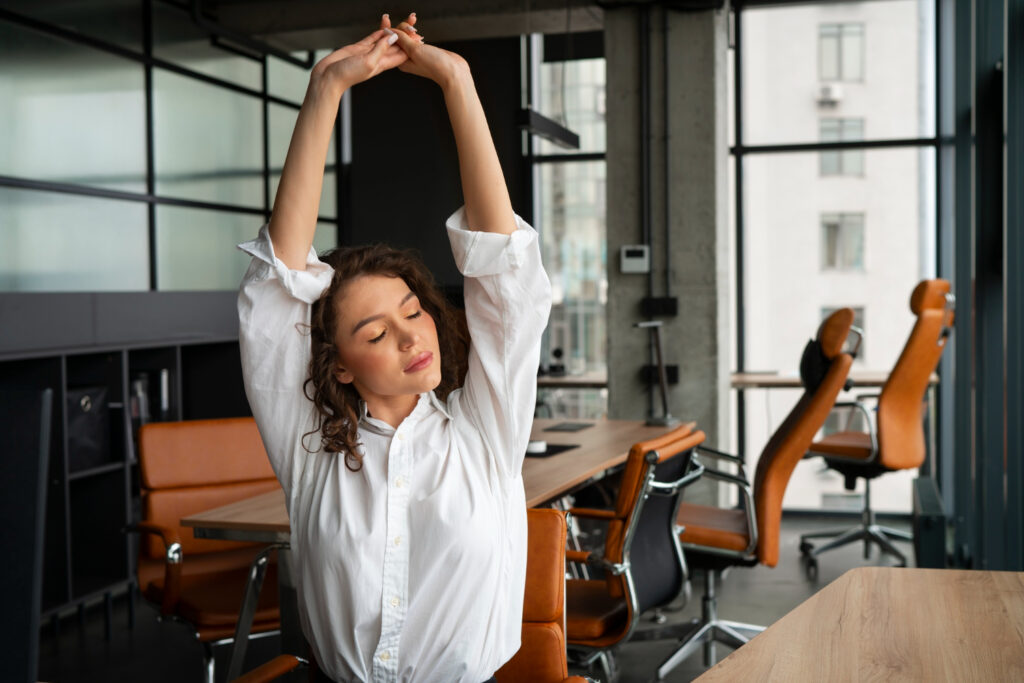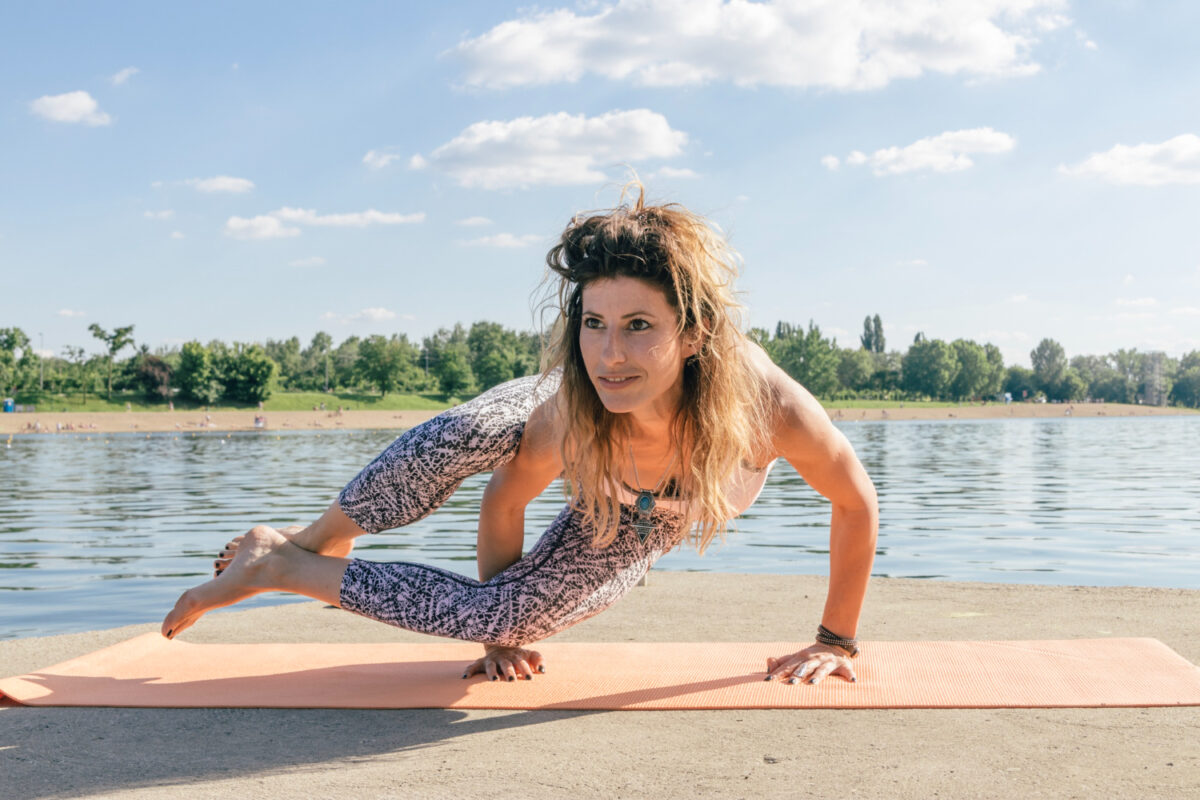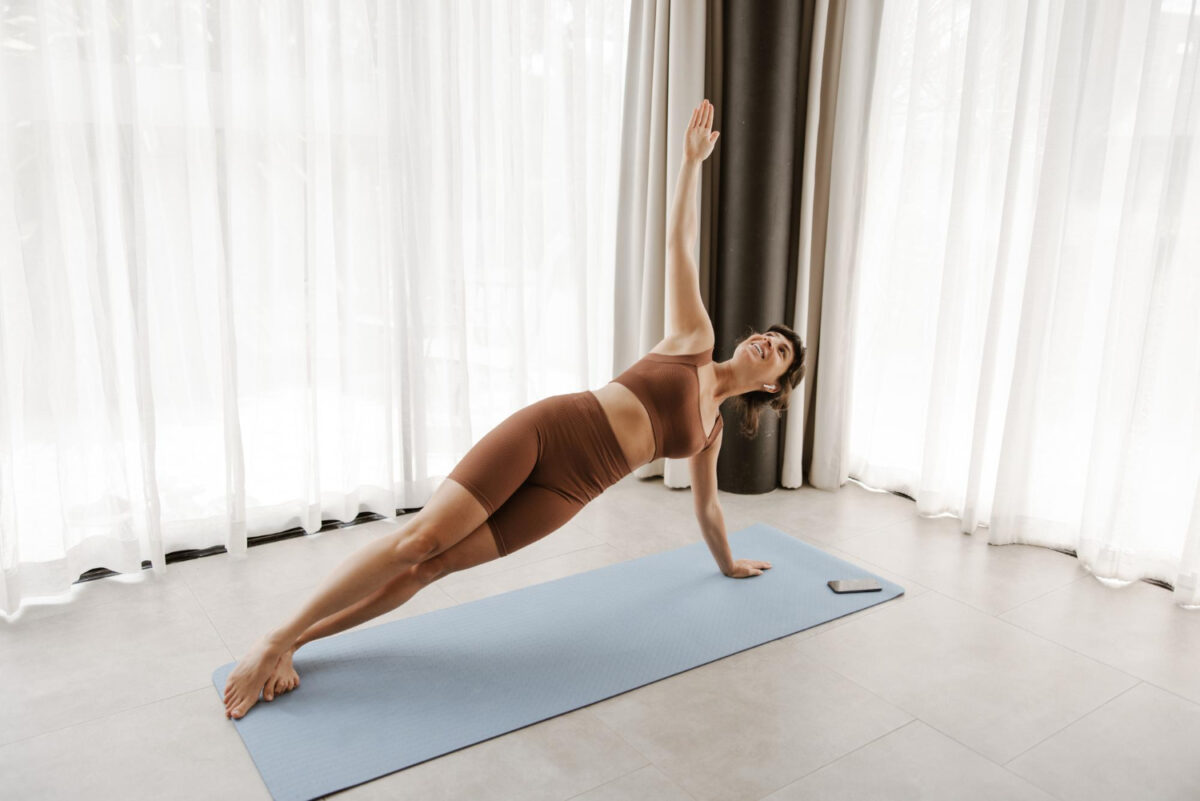Do you spend many hours of your work day in the same position? Whether sitting or performing the same repetitive movements and gestures, spending many hours in the same position reflects on your physical and even mental health. Today from Sincronia Yoga We explain 5 postures to practice yoga at work.
That's right, in your own work, without having to have special material or a large room, you can take one of the necessary movement breaks to change your posture by practicing some yoga.
Coffee break or movement breaks?
The human body is designed for movement: walking, running, jumping or dancing; But current schedules and jobs usually involve many hours a day without moving from the same place. For years, to take care of your health and even improve productivity, it has been recommended to take short breaks every 30 minutes or every hour to rest your eyes, move your body and change your mental state a little.
Think that if, in addition to the immobility or repetitive movement of your work, we add stress and tension, the cocktail can affect your physical and mental health. So don't hesitate to take as many breaks or breaks as you need. Just a couple of minutes is enough.
Instead of going out for coffee, you can decide to take a short break of healthy movement. The benefits of incorporating a yoga practice directly into work will help you:
- Relieve physical tension
- calm the mind
- Calm the emotions
- Help digestive health
- Regulate hormonal processes
Poses to practice yoga at work
Below we present some yoga postures that you can adapt to your workplace and practice one or several times during each break you decide to take. Their intention is to open spaces, move the body and focus on breathing to calm the mind.
Ardha matsyendrasana
Twisting in the chair. Designed to relocate the spine and open the diaphragm.
Sit on the edge of the chair so that your feet comfortably reach the floor and your spine rises upward without touching the backrest. Inhaling, raise your arms above your head. As you exhale, turn to the right, lowering your arms, the left hand goes to look for the right thigh, the right hand goes to the back of the chair, the head looks back without hanging down. Inhaling, return to the center and repeat to the left side.
You can do 6 times on each side and maintain the twisted posture for 3 or 4 breaths. Make sure these breaths are long, calm and deep without rushing. You have all the time to breathe.

Uttitha parsva konasana
The intercostal stretch. Open the ribs, gain space between the vertebrae and recover healthier breathing.
If you have space, do it standing with your legs open twice as wide as the hips, but it can also be done directly in the chair by opening your knees and with your hands on your thighs. Feel the contact of your feet on the ground. Inhaling, raise your left arm, drawing a half circle on its side until it is vertical towards the ceiling. Exhaling, lean sideways to the right, resting your right hand on your right thigh. Inhale, return the left arm to the vertical, exhale, lean to the right again.
Repeat 6 times with each arm. You can stay in the side stretch for 3 or 4 deep breaths.
Uttanasana
The standing flexion or the great posterior stretch of the body. Sitting for many hours shortens the hamstring muscles (back of the legs). A very good posture to stretch the entire posterior muscles of the body is the standing forward bend.
Standing, clasp your hands behind your back. As you inhale, raise your arms behind you as high as you can, away from your buttocks and opening your chest. As you exhale, flex your spine to lean forward, keeping your arms away from your buttocks. In case of herniated discs or pain in the lower back, always perform this posture with your knees bent and use your hands on your knees to go up and down into the posture.
Hold the pose for 3 or 4 deep breaths. To get out, release your heavy hands and arms and go up like an accordion vertebra by vertebra.
Hastasana
Heart opening posture. This pose opens the chest with a gentle extension of the spine. Compensates for the body's tendency to curve forward when sitting. It can be practiced standing or with the support of a chair for greater spinal extension.
Standing with your legs hip-width apart, place your fists in your lower back and bring your elbows back while opening your sternum forward and upward. If you do not have discomfort in the cervical area, you can gently move your head back. Perform dynamically, entering and exiting the posture several times, and then hold for 3 or 4 deep breaths.
For the variant with a chair, you will need one that has armrests and may be without wheels or supported on the wall so that it does not move. Sitting in the chair with your hands on the armrests, stand up, keeping your hands there and expand your chest forward and upward, tilting your head back if there is no cervical discomfort. Enter and exit several times and maintain the same time.
Eye Yoga
One of the most recommended movement breaks if you work with your eyes glued to the screens (computer, mobile phone, tablet, etc.) is to perform yoga exercises with your eyes. We recommend a simple and effective series to incorporate into your work breaks.
- Take off your glasses, if you wear them.
- Vigorously rub your hands together. With warm hands, caress your eyes and face as if you were washing your face in the morning.
- Rub again but this time rub only the base of both thumbs (big toe) together.
- Place that foundation in the “dark circles”, between the cheekbone and the lower eyelid. Repeat this heat transfer three times.
- Pat your eyes. To do this, place the palm of each hand above the eye with the fingers towards the forehead and hairline. Press and release the pressure, like a rhythmic pumping vacuum in the eye, for one minute.
- Look in all four directions without blinking. Without moving your head, look up as far as you can without blinking for 10 seconds. He looks forward and blinks several times. Repeat looking left, right and down.
We hope you are encouraged to practice yoga in the workplace, you have already seen that very little is enough. But if you want to go even deeper into the yoga practice We will be here to accompany you.
Sílvia Gallego González
Yoga teacher, author and editor of breathing books





